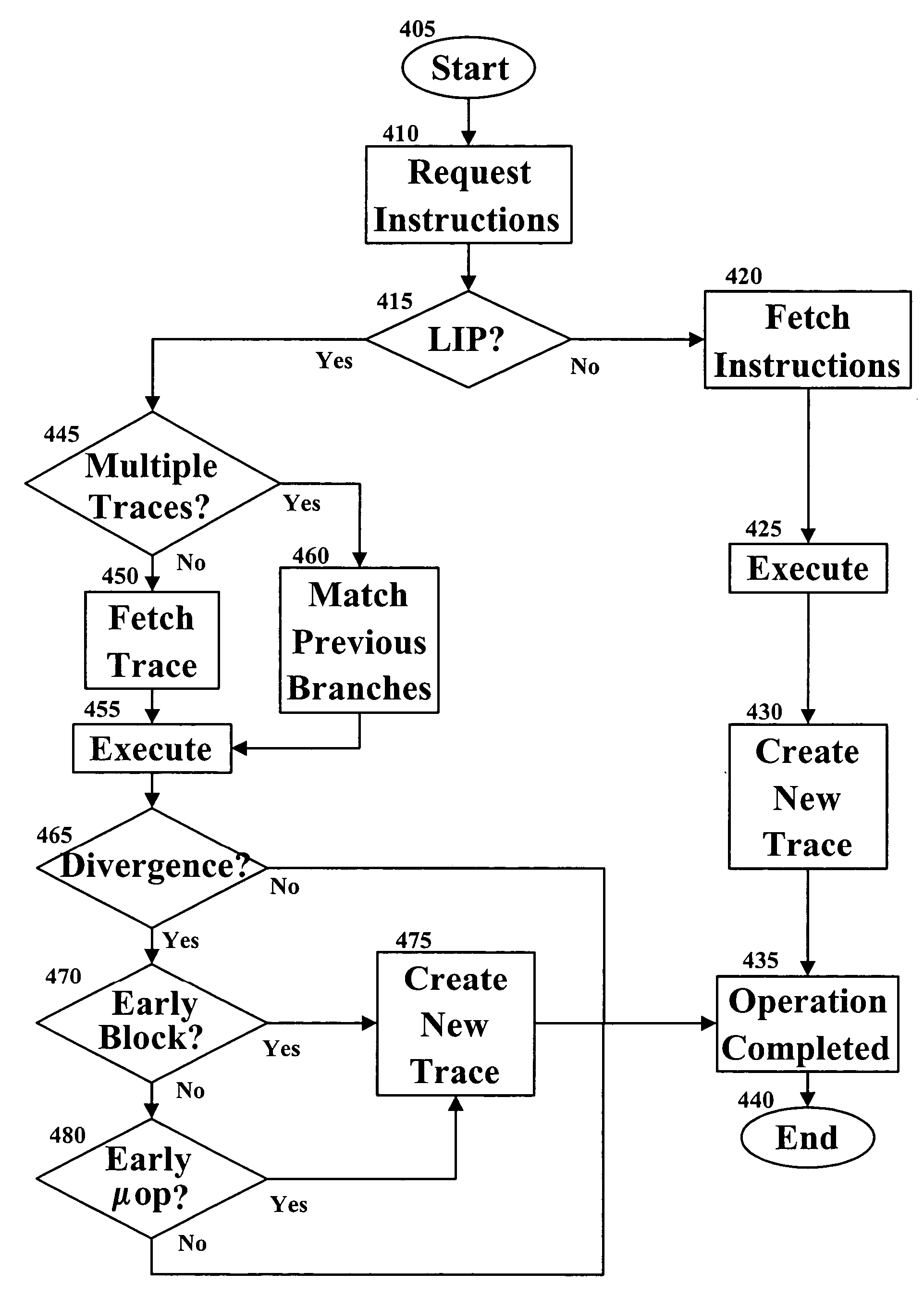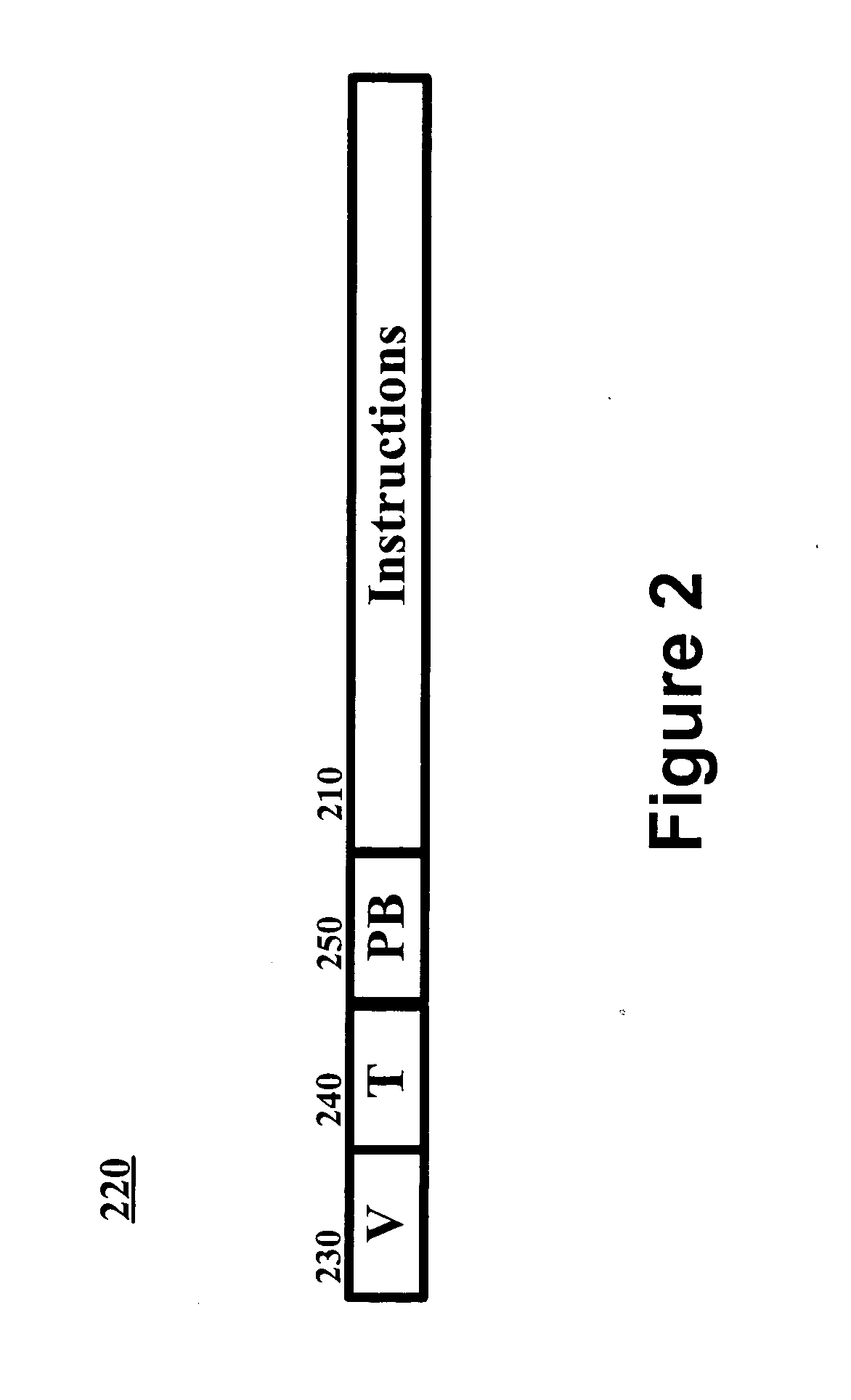Prediction based indexed trace cache
a trace cache and indexing technology, applied in the direction of instruments, computations using denominational number representations, program control, etc., can solve the problems of fragmentation and inability to wait for future predictions
- Summary
- Abstract
- Description
- Claims
- Application Information
AI Technical Summary
Problems solved by technology
Method used
Image
Examples
Embodiment Construction
[0012] A system and method for compensating for branching instructions in trace caches is disclosed. The fetching mechanism uses the branching behavior of previous branching instructions to select between several traces beginning at the same linear instruction pointer (LIP) or instruction. The fetching mechanism of the processor selects the trace that most closely matches the previous branching behavior. In one embodiment, a new trace is generated only if a divergence occurs within a predetermined location. A divergence is a branch that is recorded as following one path (i.e. taken) and during execution follows a different path (i.e. not taken).
[0013]FIG. 2 illustrates in a block diagram one example of a trace 200. A trace includes a set of instructions 210. The instructions 210 may be divided into a set of blocks, with each block containing a set number of instructions. The block may represent the number of instructions retrieved in a single fetch. A header 220 containing administ...
PUM
 Login to View More
Login to View More Abstract
Description
Claims
Application Information
 Login to View More
Login to View More - R&D
- Intellectual Property
- Life Sciences
- Materials
- Tech Scout
- Unparalleled Data Quality
- Higher Quality Content
- 60% Fewer Hallucinations
Browse by: Latest US Patents, China's latest patents, Technical Efficacy Thesaurus, Application Domain, Technology Topic, Popular Technical Reports.
© 2025 PatSnap. All rights reserved.Legal|Privacy policy|Modern Slavery Act Transparency Statement|Sitemap|About US| Contact US: help@patsnap.com



